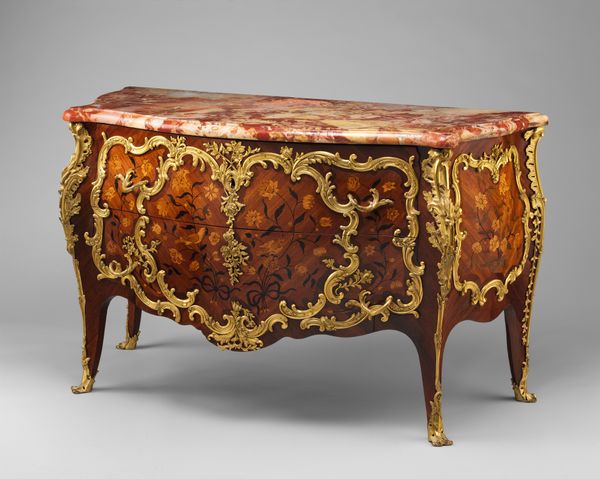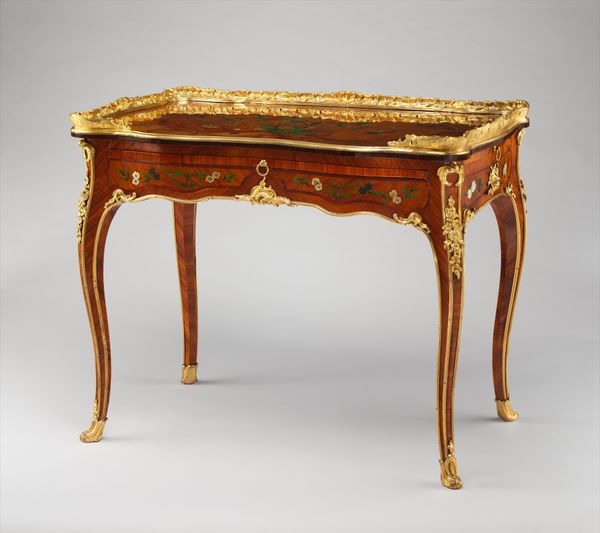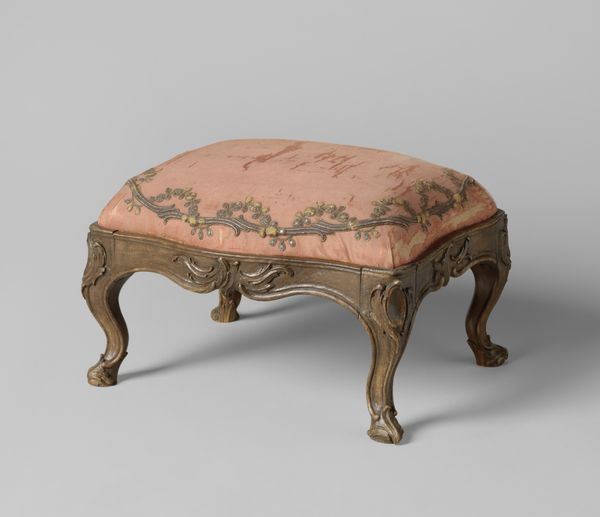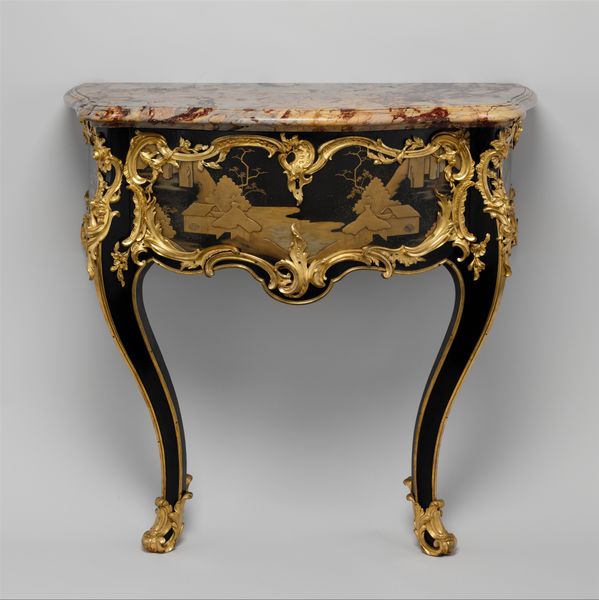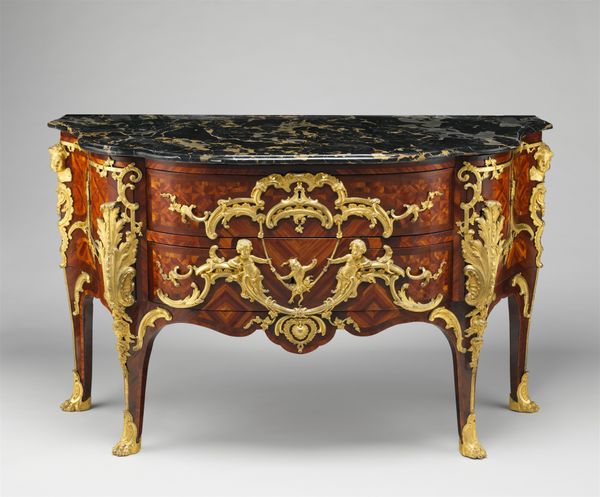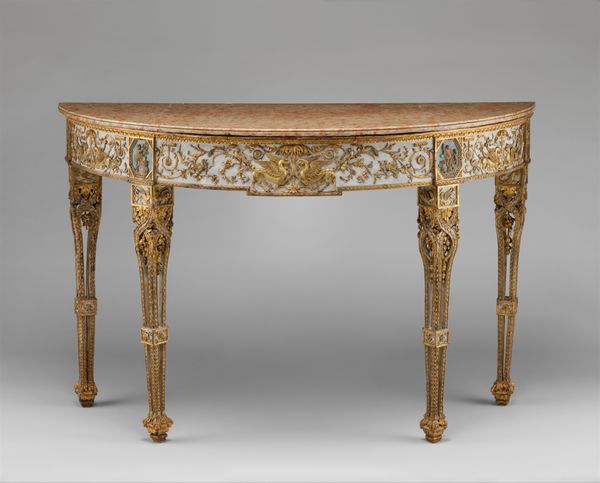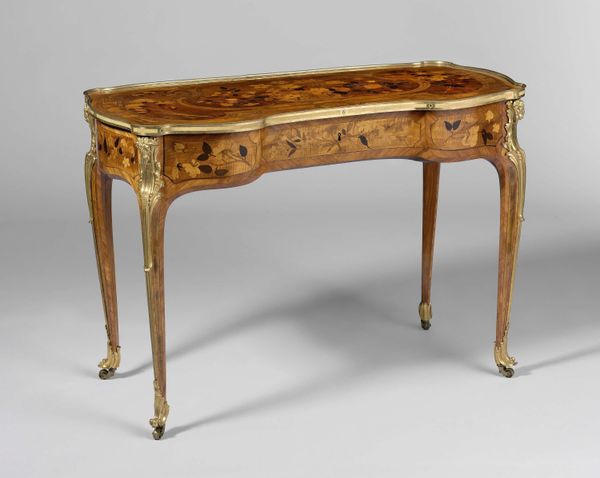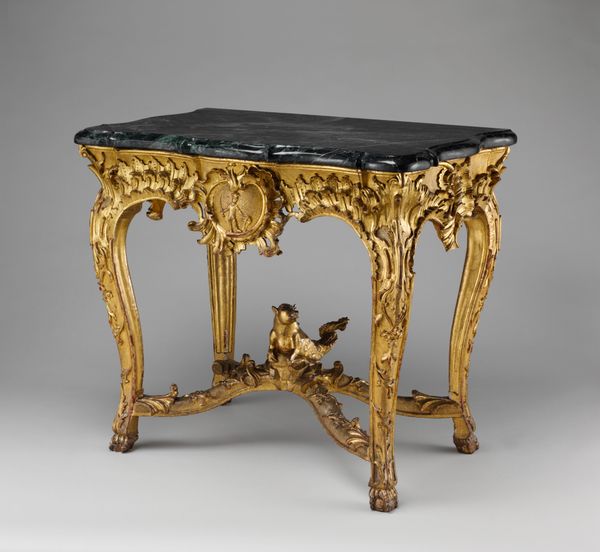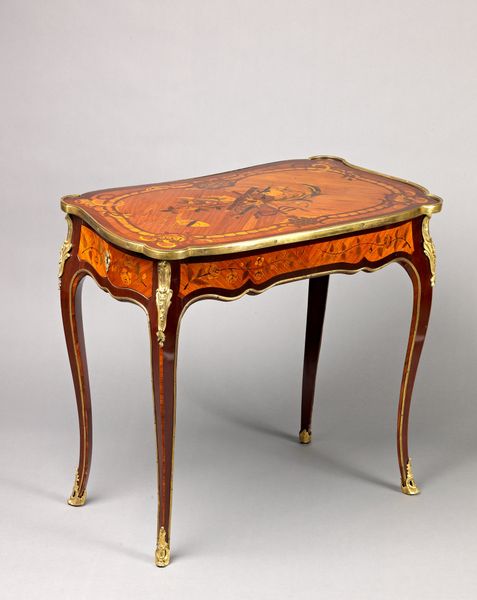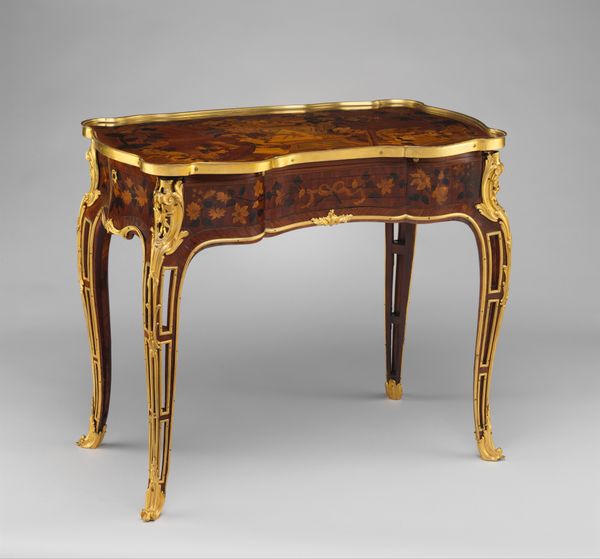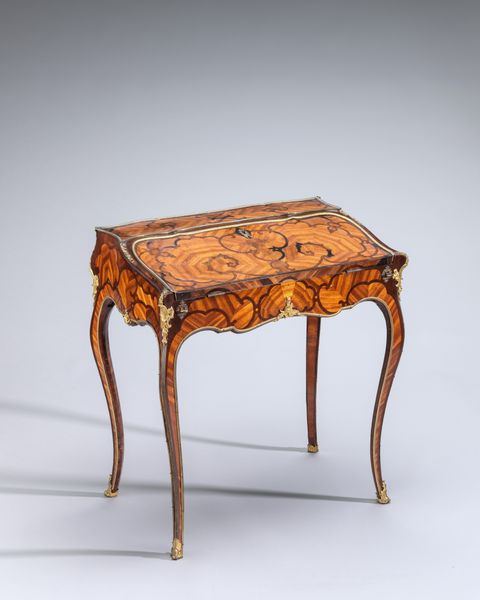
carving, sculpture, wood
#
carving
#
baroque
#
furniture
#
sculpture
#
wood
#
decorative-art
Dimensions: 20 × 22 1/2 × 16 in. (50.8 × 57.2 × 40.6 cm)
Copyright: Public Domain
Curator: Look at this gorgeous stool, crafted sometime between 1720 and 1740. Editor: My first thought? A delightful clash of rustic and opulent. The carved, gilded wood juxtaposed with that slightly faded floral tapestry is quite striking. Curator: Indeed. Its baroque style places it squarely within a period known for extravagance, but when we consider the materiality, we see an interesting contrast. It's crafted from wood—a relatively common material—but then elevated through the application of intricate carving and gilding. The tapestry on top offers a further layer of material richness. Editor: I wonder, who sat on it, and under what circumstances? These decorative objects speak volumes about power and privilege. Such an object would certainly be found in a palace or great house. Its preservation in the Metropolitan Museum of Art says something too about what gets valued and remembered in our cultural institutions. Curator: Exactly! Consider the labor involved. Skilled artisans would have dedicated considerable time to the carving alone. Was it piece-work? Were they free men, enslaved, or indentured? Also, look closely at the lion’s paw feet and the lion heads integrated into the frame. Animal motifs like this were deliberately employed, but their production had complex ties with political power and consumption, considering that their access to exotic woods and their capacity for lavish carving depended upon an intricate network of colonial commerce. Editor: It prompts reflection on how decorative art also served a clear role in visual language of baroque society, reflecting aristocratic values and solidifying a place in court. Curator: Precisely. It shows how even the seemingly most decorative objects are rooted in practical processes and can tell us important stories. Editor: Definitely food for thought! The stories objects carry through time – it's why I find history endlessly fascinating.
Comments
No comments
Be the first to comment and join the conversation on the ultimate creative platform.
